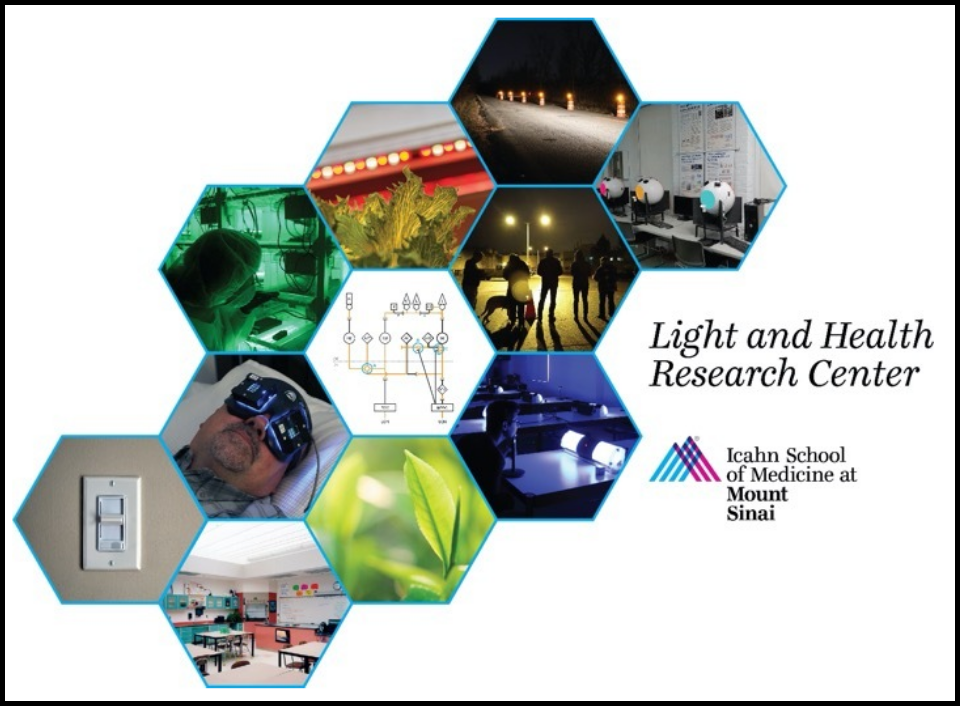The Past
Much has been learned over the past several decades about light’s non-visual impacts on the regulation and disruption of circadian rhythms in humans. In 1980, Dr. Alfred Lewy demonstrated that a two-hour exposure to high levels of light at night significantly suppressed the body’s production of melatonin. This pioneering discovery stimulated numerous subsequent studies that expanded the field of knowledge. In 2002, Dr. David Berson identified a new class of photoreceptor known as intrinsically photosensitive retinal ganglion cells (ipRGCs). While not as well known as the classical rod and cone photoreceptors, the ipRGCs are the primary ones involved in circadian phototransduction, which is how the retina converts light signals into neural signals for the brain’s master biological clock. Soon afterward, a team of scientists at the Lighting Research Center (LRC) led by Dr. Mark Rea proposed a new framework for lighting practice and discussed lighting characteristics affecting the circadian system, as measured by how light affects humans in ways other than visual image formation. Prior to that time, few publications had focused on light’s non-visual impacts. This trend has significantly changed.
Over the past two decades, our research has focused on understanding the phototransduction mechanisms of the circadian system and what kind of lighting is more effective for stimulating the biological clock. A hallmark of our work has been translating the science into applications and performing numerous field studies. Our research has primarily shown that a specific amount of light delivered with the appropriate timing, duration, and distribution can significantly improve sleep, mood, and general well-being for newborns in the NICU, students in schools, office workers, and older adults, including those living with Alzheimer’s disease. We have also studied how light can reduce fatigue in cancer patients and support alertness in night-shift nurses and U.S. Navy submariners.
In all these field studies, the careful calibration and measurement of light has underscored our firm belief that one cannot even begin to talk about circadian response without first correctly measuring the stimulus. The development of a personal circadian light measurement device known as the Daysimeter, led by our chief scientist Andrew Bierman, was a milestone for us, creating numerous opportunities for new field research.
Over the past two decades, much has also changed on the technology side. A new era of lighting has emerged in the last quarter century with the development of solid-state lighting, including light emitting diodes (LEDs). Not only are these lighting technologies less expensive to purchase and operate than 20th century technologies, but the quality of the light is also better than ever before. The precise and easy control of spectrum, amount, duration, and timing allow lighting professionals to lay out the palette for painting a picture of better health for everyone – at an affordable price.
The Present
Given the increased understanding of circadian phototransduction, advances in lighting technology, and extensive research into the health risks posed by circadian system disruption, there is a growing responsibility to ensure that positive health outcomes are promoted in everyday lighting solutions wherever possible.
Despite widespread agreement that a 24-hour cycle of bright days and dim nights can clearly benefit health and safety, many researchers in the field have noted a lack of appropriate metrics and analytical methods to fully predict and explain lighting’s effect on the circadian system. Without an agreement on metrics and methods, some argue, it is impossible to tailor lighting applications for a specific effect on the circadian system.
My view is that this is beside the point. The science is still young, but we know enough that we can start applying the knowledge at hand in spaces where the 24-hour levels of bright and dim are known to be a problem (e.g., nursing homes, prisons, submarines). It is, after all, about bright days and dark nights – not which metric is better for defining light and dark. Thus, there is a clear and growing need to pivot light and health research toward the bed-side and away from the bench-side. And this pivot provides previously untold opportunities for the lighting profession.
The Future
The Light and Health Research Center was created at the Icahn School of Medicine at Mount Sinai to combine basic science, clinical research, and bioengineering and design to bolster our knowledge of light’s impact on human health and safety. Our mission is to advance the wellbeing of people and the planet through the science of light.

The Mount Sinai Light and Health Research Center brings together a highly skilled group of researchers, educators, and designers who are passionate about what light can do to improve the lives of people and sustain a healthy planet.
Among the many projects underway, we are continuing to look at how bright days and dim nights improve sleep for people from many walks of life, from submariners to premature infants to senior citizens and, indeed, to all who work in offices, schools, and factories. We are developing lighting schemes to improve the lives of those living with conditions like Alzheimer’s disease and depression, and those who are undergoing cancer treatment or recovering from traumatic brain injury. We are also exploring the science and application of ultraviolet light to improve vitamin D production in populations who do not get enough sunlight, to control agricultural plant pathogens, and to serve as a germicidal disinfection strategy in the built environment. We are also developing innovative lighting solutions for safer transportation, like emergency vehicles, that provide visual information rather than just visual sensation. And we are excited that we will be sharing our work with you every two months through our regular column in designing lighting (dl).
To mashup Timbuk 3 and Corey Hart, “the future’s so bright, we gotta use shades at night!”
This article was originally featured in the June issue of designing lighting (dl)



